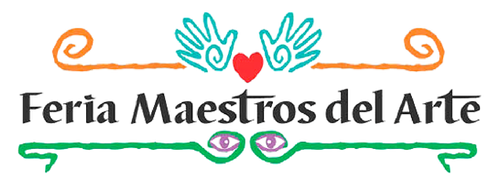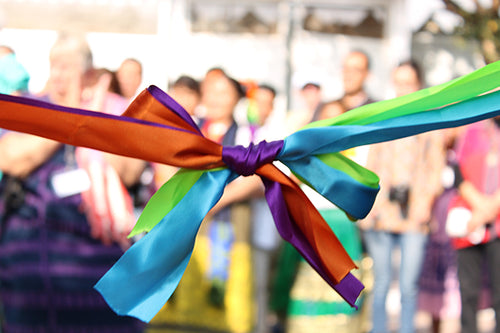
Martina Navarro González, Uruápan, Michoacán
Lacquer, known in Mexico as Maque, in China as Ch'í-Ch'í and in Japan as Urushi, was a technology well-known in Michoacán, on the west coast of Mexico, at the time of the Spanish invasion. The process of lacquering was practiced for several centuries by pre-Columbian Amerindians in what today are the States of Chiapas, Guerrero, and Michoacán, and perhaps as far north as Sinaloa. China is regarded as the original home of lacquer. The Chinese recognized the protective qualities of the sap at least three thousand years ago.
Uruapan in Michoacán is considered the cradle of maque together with other centers in Chiapas and Guerrero. Maque art flourished there long before European contact. How did the Michoacán people come to know this art? Did they develop it? Was it introduced from Asia? If so, when and how?
Maque in Michoacán probably dates from between the 8th and 12th centuries, when a wave of cultural innovations appeared in Michoacán, along with metallurgy and a new ceramic style.
Martina Navarro González and her husband, Tomás de Saint Phalle are well known in the world of maque. To achieve the desired results, Martina has both a lacquer and carpentry workshop where three people assist her. The lacquer technique that is used is of pre-Hispanic origin and has evolved still satisfying the requirements of originality. This is a family business devoted to marketing high-quality crafts of fine, lacquered wood. She began this work in 1986 making only small quantities, participating in contests and perfecting her abilities. In 1994, she began to produce in greater quantities, having achieved acceptance and recognition for the quality of her pieces and their singular design.
Maque is a decorative technique that consists of the application of natural each pigments and oils, extended uniformly with the palm of the hand on bowls, boxes and wooden trays. Upon drying, the piece becomes hardened and develops a beautiful, lustrous surface.
The incrustation technique is applied to this surface, which is achieved by etching the desired design with a knife or sharp utensil on the lacquered surface of the object before it is completely dry.
The final step is to etch out the places in the design which are to be a different color, and to fill in these areas with the new colors. The piece must dry for several days between color changes.
The pieces created by Martina Navarro are characterized by her respect for traditional designs and techniques, thus creating a special combination where her work is recognized for their quality, function and beauty.
MATERIALS AND PROCESS
Maque is a semi-liquid paste - formed with a mixture of animal and vegetable oils, and natural refined clays - used, as lacquer is, to waterproof and decorate the surfaces of various types of objects.
The principal ingredient (animal) is the grease extracted from the aje insect (Coccus laccá, or Coccus-axin). The aje insects are purposely propagated by the Purépecha people of Michoacán, who are today known as Tarascos, a name given them by the Spanish.
Aje insects must be gathered alive during the rainy season and, still alive, dropped into boiling water. (Insects dead before boiling are not useful). The aje is boiled until it releases a hard waxy substance. When the water cools the substance floats to the surface, is collected, washed, and is re-heated to remove any water residues and to liquefy it for easy straining; when it cools, like bars of butter, is stored wrapped in cornhusks.
Traditionally, insects were collected in May and June, wrapped in corn husks along with some tassels for their nourishment, and stored in a safe place where other insects would not disturb them. In November and December, the husks were opened inside white loose-weave cotton bags, and attached to selected trees such as cherry, acacia, pine-nuts, and Amate. The insects crawled out of the bags to find a place to lodge on the woody crevices of the tree-bark, and were harvested the following year.
The second ingredient (vegetable), Chía oil, is extracted from the seeds of a native sage plant. The Aztecs cultivated the plant for its medicinal properties; to prepare a refreshing beverage; and to extract the oil. Chia oil has a high glyceric content that quickly absorbs oxygen from the air, and forms an elastic hard surface with drying properties; it serves to thin the aje mixture. Chía oil is the base for maque in Chiapas and Guerrero where there is no aje.
The Chia oil is extracted by slowly roasting the seeds on a flat metal or clay dish on a low fire until they are uniformly light brown, or the seeds begin to pop open. When cool, the seeds are ground in a hand-mill or on a stone pestle. Hot water is added to the fine flour to form a mushy paste, which, when cool, is kneaded for about an hour or until the oil begins to drip. The paste is wrapped in a cloth and twisted to wring out the oil. Finally, the oil is boiled to preserve it until it is needed.
The third ingredient (mineral), fine dolomite powder, is added to the aje and chia oil to give it the necessary consistency. Dolomite - called Teputzuta in Purépecha - and other similar mineral clays used as colorants give body to the maque mixture.
The Maque process in Michoacán follows the Chinese and Japanese prototype. Preparation of the surface is identical as in China and Japan - that is, any cracks are filled with a mixture called Nimácata, a mixture of dolomite powder and Chía oil. The object is sanded until completely smooth and as many coats of nimácata are applied as necessary and drying and sanded in between applications until all pores are filled and all imperfections eliminated.
COLORS
Colors initially used in pre-Hispanic Michoacán were red and black as in early Chinese and Japanese lacquer ware. Black was obtained from the fine powder of burned animal bones or from burned corn cob. Other colors were later introduced such, as blue, yellow and green. Colors are also extracted from plants and insects. Vermilion was achieved by combining sulfur and cinnabar.
Magenta, purpura (purple), and scarlet, were extracted from cochineal eggs. To extract the color from cochineal, the insects are cooked in vapor and dried in the sun before being ground to a fine powder. The purpura and red colors obtained from the cochineal were associated with fire and the sun and were considered to posses magic and spiritual values.
Yellow was extracted by boiling a piece of zacapele wood; the resulting tincture was mixed with clays of other colors for different color combination.
Blue, (añil) or indigo was obtained from a plant. Blue from natural colorants is difficult to produce in maque or lacquer. Properties in laca and aje affect colors and therefore the use of color is limited.
Carving in Michoacán is somewhat different than the Chinese carved lacquer. Each part of the design of the same color - such as flower petals - is carved from the several coats of a maque and the cavities filled with the desired color - ne color at a time - drying, scouring and polishing after each.
Incrustado (inlaying) in maque ware used turquoise stones, and perhaps coral, mother-of-pearl, and gold, copper, or silver. No samples of maque ware have survived to indicate that other materials were used in incrustation, but that technique has existed for centuries in west Mexico.
425 523-1439
Uruápan, Michoacán

